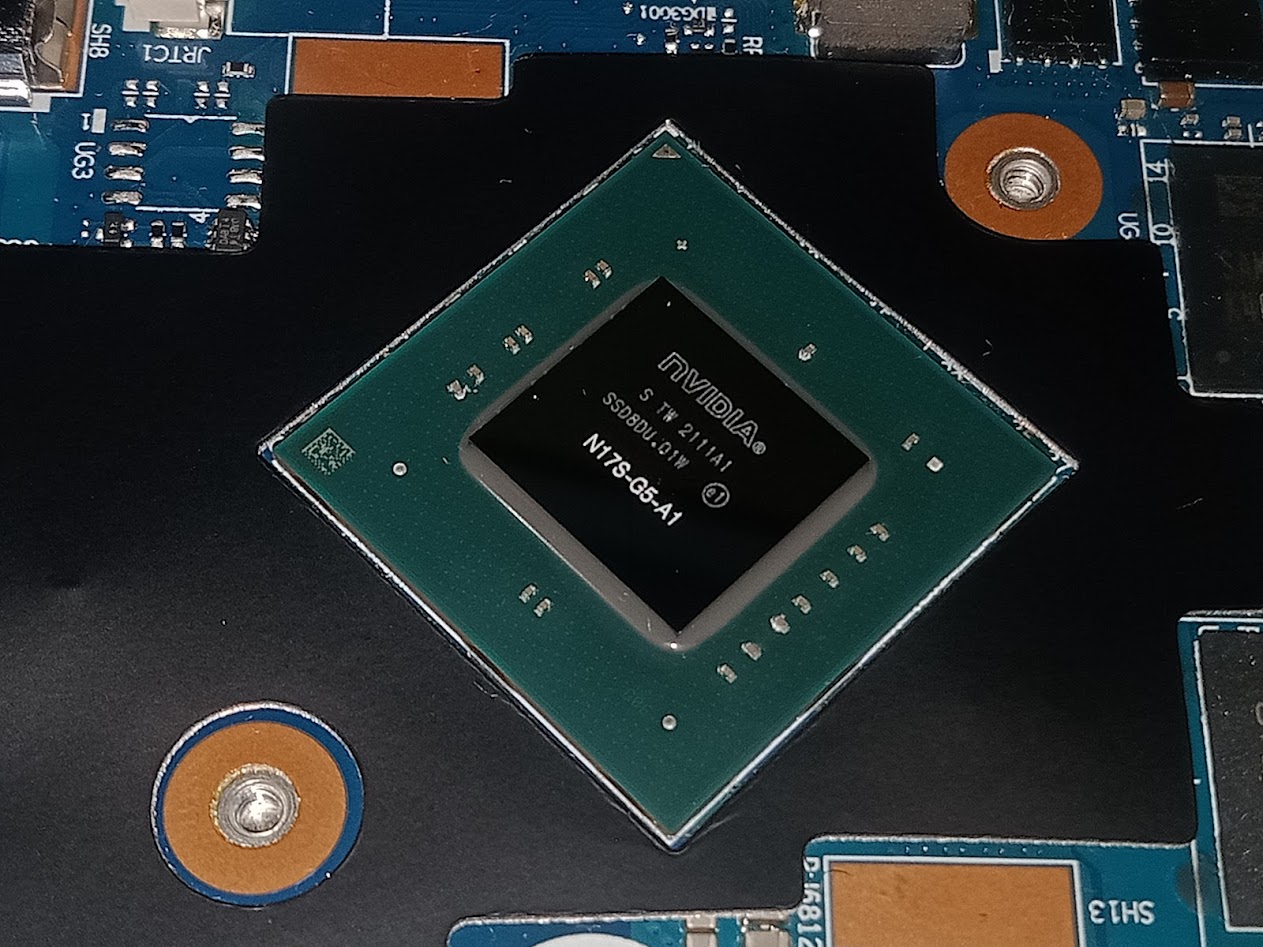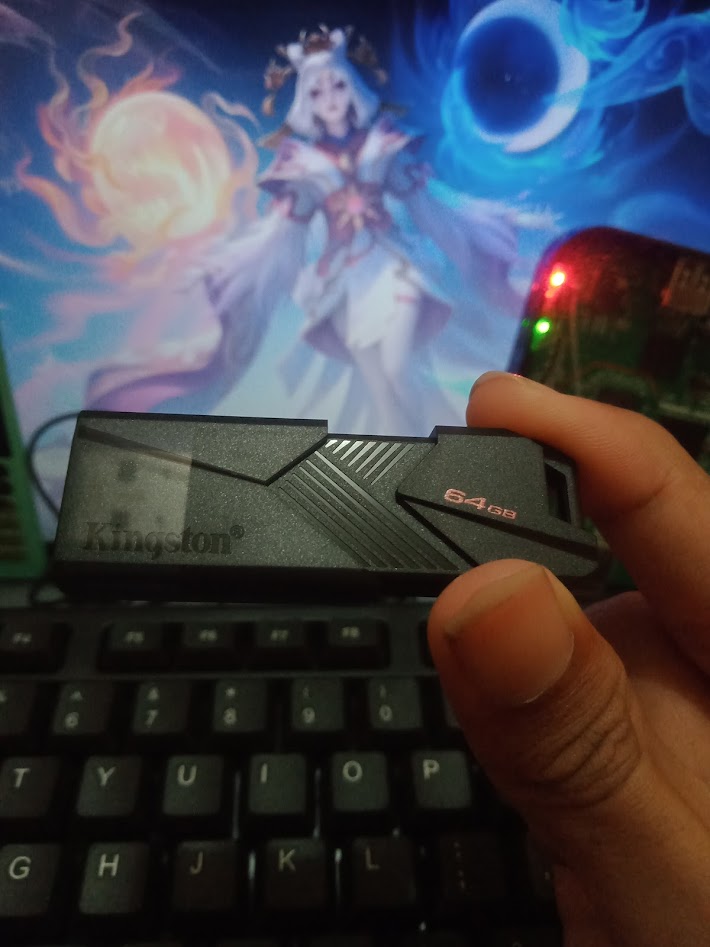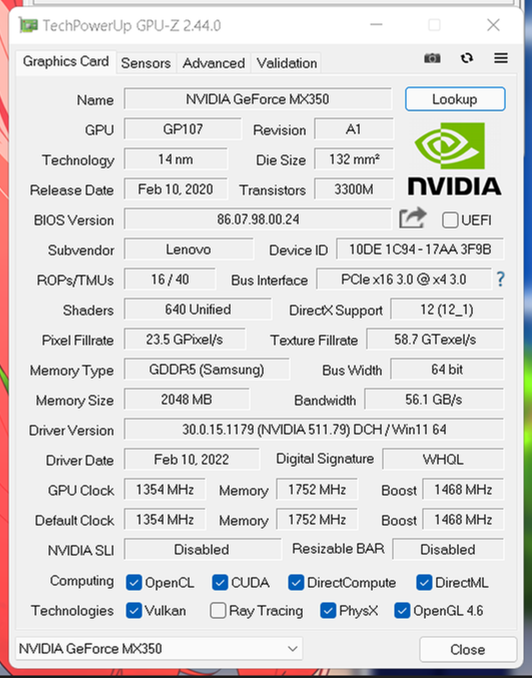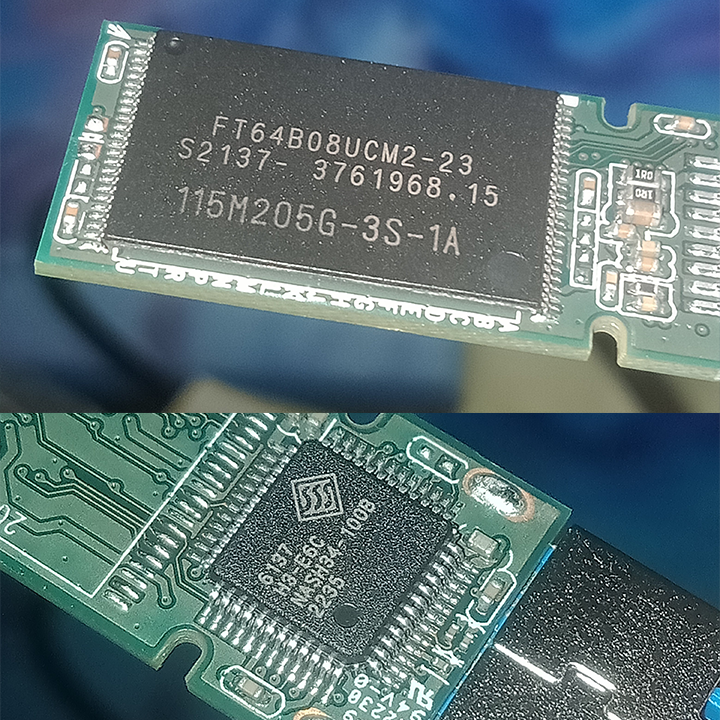Comparing: GeForce MX350 [Disk] vs Kingston Data Traveler Exodia Onyx 64GB
In this comparison, we analyze two Disks: GeForce MX350 [Disk] and Kingston Data Traveler Exodia Onyx 64GB, using synthetic benchmark tests to evaluate their overall performance. This side-by-side comparison helps users understand which hardware delivers better value, speed, and efficiency based on standardized testing. Whether you're building a new system or upgrading an existing one, this benchmark-driven evaluation offers valuable insights to guide your decision.

GeForce MX350 [Disk]
| Type: | Disks |
|---|---|
| Model: | GeForce MX350 [Disk] |
| Capacity: | 2GB, 1.5GB |
| Interface: | GDDR5 |

Kingston Data Traveler Exodia Onyx 64GB
| Type: | Disks |
|---|---|
| Model: | Kingston DTXON 64GB |
| Capacity: | 64GB |
| Interface: | USB 3.0 |
Specification Comparison Table
This specification comparison presents technical details of several devices or components to help you understand the key differences between each option. Use this table as a reference to determine which device best suits your needs.
| Specification | GeForce MX350 [Disk] | Kingston Data Traveler Exodia Onyx 64GB |
|---|---|---|
| Brand | Samsung | Kingston |
| Format | VRAM Disk | USB FlashDrive |
| Capacity | 2GB, 1.5GB | 64GB |
| Interface | GDDR5 | USB 3.0 |
Submission Comparison Table
This submission comparison table displays the number and details of benchmark data submissions from various devices or components. This information helps you understand the performance based on the benchmarks that have been tested, as well as providing an overview of the consistency and popularity of the available benchmark results.
| No. | Benchmark Software | GeForce MX350 [Disk] | Kingston Data Traveler Exodia Onyx 64GB |
|---|---|---|---|
| 1 | ATTO Disk Benchmark - 64M |
Read: 1440.00 MB/s Write: 1330.00 MB/s |
Read: 168.42 MB/s Write: 18.60 MB/s |
| 2 | CrystalDiskMark |
Read: 1113.58 MB/s Write: 995.48 MB/s |
Read: 89.08 MB/s Write: 19.50 MB/s |
Submission Comparison Chart
This chart visualizes the benchmark scores comparison between two hardware devices based on submitted data.
Media Gallery
A collection of photos of tested hardware. These images can help you identify the physical form, model, and variant of the hardware in question. These photos are from our own documentation, and if they are not available we may not be able to document them.
About Hardware GeForce MX350 [Disk]
The NVIDIA GeForce MX350 is an entry-level GPU designed for thin and light laptops, delivering significant graphics performance improvements over the processor's built-in iGPU. The GPU is based on the Pascal architecture with 640 CUDA Cores, and features 2GB or 4GB of GDDR5 memory with 64-bit bus width. The MX350 is generally used for light graphics tasks such as photo editing, light video, and casual gaming, and provides GPU acceleration for CUDA-enabled creative applications.
But in this particular test, a portion of the video memory (VRAM) on the GeForce MX350 was configured as a VRAMDisk. The concept of a VRAMDisk is similar to a RAMDisk, but it uses the VRAM of the GPU as a super-fast storage medium. VRAMDisk allows the creation of temporary, high-speed drives that can be utilized for technical experiments, speed testing, or graphics caching in certain scenarios. Although its capacity is limited and volatile (data is lost on reboot), the high bandwidth and low latency of VRAM provide compelling performance in certain contexts.
The tests were conducted on a Lenovo IdeaPad Slim 3i 14ITL6 laptop with Intel Core i5-1135G7 processor, 12GB DDR4 3200MHz dual channel RAM, and Windows 11 22H2 operating system. The VRAMDisk was created from a 2GB GeForce MX350 GPU, with virtual disk sizes of 1GB and 1.5GB, using special software called GPU RAM Drive.
Benchmark results with CrystalDiskMark recorded read speeds of 1113.58 MB/s and write speeds of 995.48 MB/s, showing the high bandwidth potential of VRAM as a temporary storage medium. Although the performance does not match DDR4-based RAMDisks, VRAMDisks remain a unique and attractive solution for certain technical purposes, especially for users who want to utilize idle VRAM for fast I/O processes. With its dedicated laptop GPU form factor and PCIe x4 Gen 3.0 interface, the GeForce MX350 VRAMDisk opens up new exploration possibilities in the world of experimental graphics-based high-speed storage.
Device test (testbed):
Device: Lenovo IdeaPad Slim 3i 14ITL6
CPU: i5 1135G7
RAM: 12GB DDR4 3200MHz Dual Channel (8+4)
OS: Windows 11 22H2
Friday, 06 August 2021 04:34:19 | Update: 1 month ago
About Hardware Kingston Data Traveler Exodia Onyx 64GB
The Kingston DataTraveler Exodia Onyx 64GB is a stylish, modern flash drive that offers ample storage capacity and high performance in a compact format. Featuring a USB 3.2 Gen 1 interface, it is capable of high-speed data transfers, ideal for users who frequently move between devices and need a fast and reliable portable solution.
With a capacity of 64GB, this flash drive can store various types of files such as work documents, photo collections, videos, and application installers. The USB 3.2 Gen 1 technology (USB 3.0 compatible) enables efficient transfer of large files, while still supporting full compatibility with USB 2.0 ports, ensuring versatility across devices.
This flash drive performance test was conducted using a Lenovo IdeaPad Slim 3i 14ITL6 laptop equipped with an Intel Core i5-1135G7 processor, 12GB DDR4 dual channel RAM, and running Windows 11 version 22H2 operating system. This combination of specifications ensures that testing takes place under optimal and representative system conditions for everyday use.
In tests using CrystalDiskMark, the flash drive recorded a read speed of 89.08 MB/s and a write speed of 19.50 MB/s. These results place it in the sufficient performance category for standard needs such as saving documents, transferring image files, or playing small to medium-sized multimedia files.
Furthermore, through the ATTO Disk Benchmark test with a block size of 64MB, the flash drive showed a higher read performance, reaching 168.42 MB/s, while its write speed dropped slightly to 18.60 MB/s. The variation in results between these two benchmarks is quite common and shows how the test method and type of data used can affect the performance recorded.
Overall, the flash drive offers good read speeds, especially when tested with ATTO, but its write speeds are still quite low. Nonetheless, this flash drive is still worth using as an additional storage medium for lightweight files or backups of important documents, especially for users who prioritize portability and ease of access.
The benchmark results show that this flash drive has a fairly high read speed, especially in burst or sequential access scenarios, although the write speed is fairly standard for the entry-level USB flash drive class. This is quite common in flash drive products with economy generation NAND flash and no DRAM cache, such as the one used in the Exodia Onyx.
Physically, the Kingston Exodia Onyx comes with a sleek and modern all-matte black design. The cap-shaped cover provides extra protection for the USB connector when not in use, and the included hanger hole allows this flash drive to be easily connected to a keychain or lanyard. The Kingston name remains a guarantee of quality and long-term durability in the portable storage media segment.
While this flash drive is not the fastest choice for large write jobs, such as video editing directly from the drive, the Kingston DataTraveler Exodia Onyx 64GB remains an affordable, reliable and stylish option for everyday use such as storing office files, backups or transferring data between devices.
Device test (testbed):
Device: Lenovo IdeaPad Slim 3i 14ITL6
CPU: i5 1135G7
USB: USB 3.1 Gen 1
RAM: 12GB DDR4 3200MHz Dual Channel (8+4)
OS: Windows 11 22H2
Monday, 03 July 2023 10:52:01 | Update: 6 days ago


